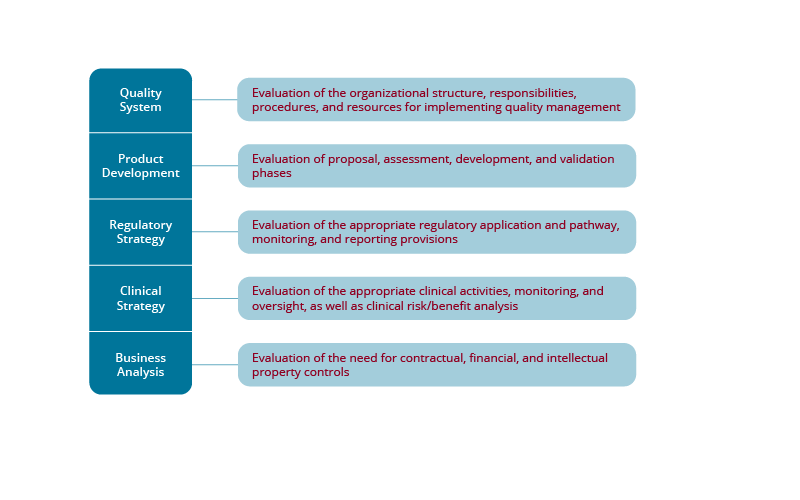Molecular and Cellular Therapeutics’ Risk Management Program identifies and mitigates risk associated with developing and manufacturing human cell- and tissue-based products. The program routinely evaluates and monitors the effectiveness of internal processes and GMP systems in order to alleviate a potential product recovery, product recall, clinical risk, or a nonconformance situation.
The Risk Management Program consists of a variety of activities spanning the development life cycle of a product. A risk management plan is created at project initiation and maintained throughout the life of the program. At project initiation, the plan will outline risk management elements, specific SOPs, deliverables, and an overview strategy of compliance with University, national, and international regulations that include risk management requirements.
Risk Management Elements Include:
- Quality system: Evaluation of the organizational structure, responsibilities, procedures, and resources for implementing quality management.
- Product development: Evaluation of proposal, assessment, development, and validation phases.
- Regulation strategy: Evaluation of the appropriate regulatory application and pathway, monitoring, and reporting provisions.
- Clinical strategy: Evaluation of the appropriate clinical activities, monitoring, and oversight, as well as clinical risk/benefit analysis.
- Business analysis: Evaluation of the need for contractual, financial, and intellectual property controls.
